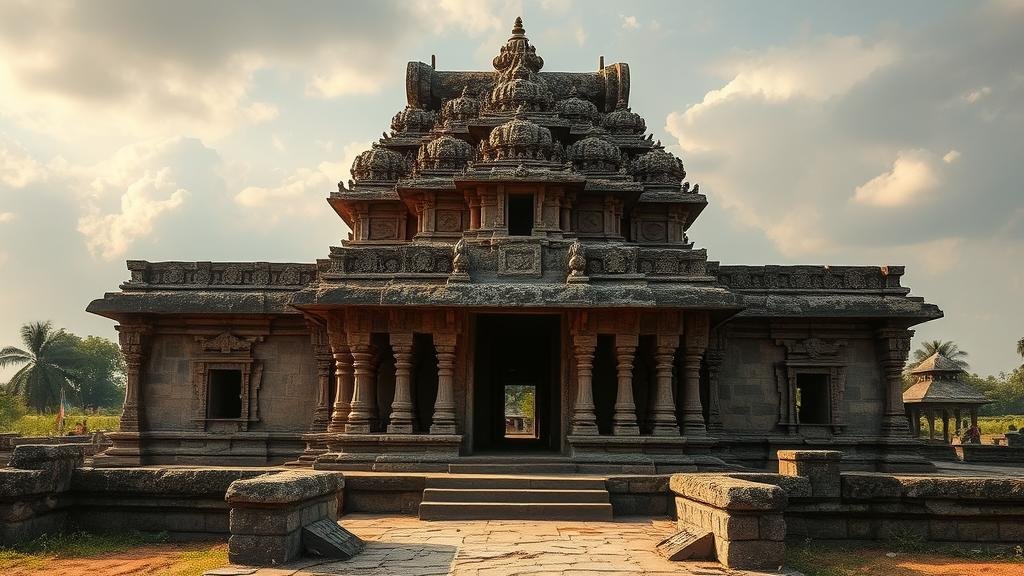Exploring the mysterious temples of the lost Tamil city of Kaveripattinam.
Exploring the Mysterious Temples of the Lost Tamil City of Kaveripattinam
Kaveripattinam, also known as Kaveripoompattinam, was once a bustling port city located in the southern Indian state of Tamil Nadu. Recognized as a significant center for trade and culture during the ancient times, Kaveripattinam has captivated historians and archeologists alike. This article delves into the historical significance, architectural marvels, and enduring mysteries of the temples in this ancient city.
Historical Background of Kaveripattinam
The origins of Kaveripattinam are traced back to at least the 2nd century BCE, coinciding with the rise of the Tamil kingdoms. city was strategically located near the mouth of the Kaveri River, facilitating international trade with regions as far as Rome and Southeast Asia. Kaveripattinam flourished under the rule of the Chola dynasty, gaining prominence as an economic and cultural hub.
Historical texts refer to Kaveripattinam as a significant entrepôt for commodities such as spices, textiles, and precious stones. The city was also a focal point of Tamil literature, with renowned poet Ilango Adigal celebrating its wealth in his epic work, Silappatikaram. Over time, however, natural calamities and shifting trade routes led to its decline, ultimately resulting in its abandonment around the 15th century CE.
Architectural Marvels of Kaveripattinam
The temples in Kaveripattinam reflect the architectural ingenuity of the Tamil people. While many structures have succumbed to time, several continue to witness the rich cultural heritage of the region.
- The Varadaraja Perumal Temple: This ancient temple is believed to date back to the 8th century CE and was dedicated to Lord Vishnu. The temple features intricate sculptures and frescoes that showcase the artistry of the period.
- The Kaveri Mangalambigai Temple: Dedicated to the goddess Mangalambika, this temple is another significant structure in Kaveripattinam. Architecturally, it displays a blend of Dravidian elements, characterized by towering gopurams (gateway towers) and elaborate carvings.
The Mysterious Temples and Their Significance
Archaeological excavations in Kaveripattinam have uncovered numerous temples, many of which remain shrouded in mystery. Notably, the excavation site has revealed remnants of a submerged structure believed to be a temple complex dating back to the Sangam period, estimated from 300 BCE to 300 CE.
The significance of these temples extends beyond their architectural beauty. They serve as key indicators of the socio-religious practices of ancient Tamil society. The presence of Shiva and Vishnu temples hints at the syncretic nature of religious beliefs at the time, showcasing a blend of Shaivism and Vaishnavism.
Recent Discoveries and Ongoing Research
In recent years, researchers have ramped up efforts to excavate and study the remnants of Kaveripattinam. Landmark discoveries include over 200 artifacts that provide insight into trade activities, such as terracotta figurines, pottery, and inscriptions. The discovery of underwater structures has led academics to theorize about the city’s potential flooding and its impact on urban planning.
According to a report by the Archaeological Survey of India (ASI), ongoing excavations can help reconstruct the socio-economic fabric of the region during ancient times. Advanced methods such as ground-penetrating radar and underwater archaeology utilized to gain a more comprehensive understanding of this lost Tamil city.
Visiting Kaveripattinam Today
For history enthusiasts and travelers alike, Kaveripattinam offers a glimpse into the past. Visiting the site can be an enriching experience, with opportunities to explore the remnants of temples and engage with local guides knowledgeable about the rich tapestry of history.
While access might be limited due to its archaeological status, efforts are underway to promote heritage tourism in the area. Travelers seeking to explore ancient Tamil culture will find Kaveripattinam a treasure trove of history and intrigue.
Actionable Takeaways
- Consider visiting archaeological sites, such as Kaveripattinam, to appreciate ancient Tamil culture.
- Engage with local historians or guides to gain deeper insights into the temples and their significance.
- Support ongoing archaeological efforts by participating in or donating to organizations focused on preserving Tamil heritage.
To wrap up, the mysterious temples of Kaveripattinam not only serve as historical artifacts but also as beacons of the rich cultural heritage of the Tamil people. As research continues, further discoveries may illuminate the complexities of this once-thriving city, revealing insights that have long lain hidden beneath the sands of time.



